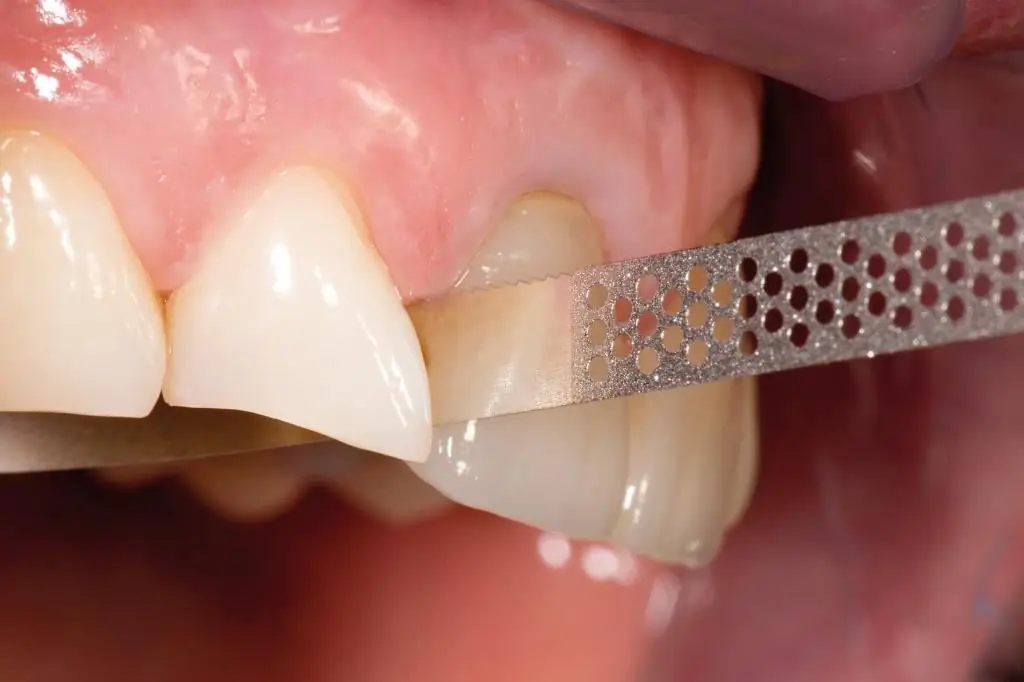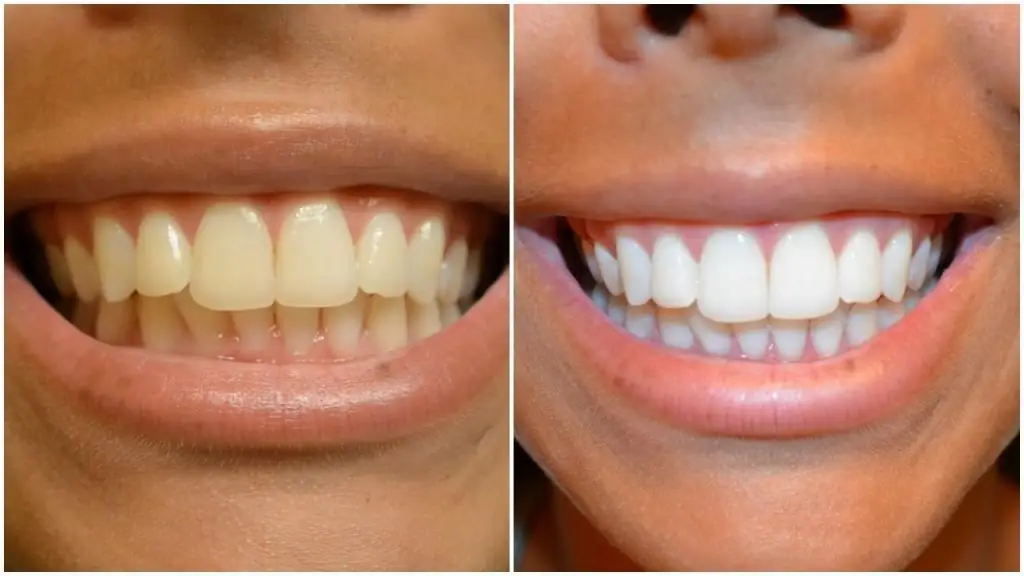- Author Curtis Blomfield [email protected].
- Public 2023-12-16 20:44.
- Last modified 2025-01-23 17:01.
Dental strips are a frequently used tool in medical practice. They are necessary to perform various procedures that have a restorative or restorative effect. Most often, they are used by specialists in the field of aesthetic dentistry.
Definition and purpose
In medical practice, metal dental or plastic strips are used. The latter are most often made of polyester. Consumable material has the form of a narrow strip 2-6 mm wide. The surface is sprayed with varying degrees of abrasiveness.

The main purpose for their use is shaping the dental crown, as well as processing the interdental space. Doctors also call them grinding or abrasive strips. They are used only if the area to be treated cannot be reached with rotary instruments. Strips remove deposits on the teeth, prepare, restore and shape the veneers.
Product features and classification
These consumablesmaterials for dentistry are used depending on the procedures performed. It is worth noting that the strips are very popular, because they are used to perform therapeutic manipulations of various complexity.
Classify the tool by purpose:
- Surface polishing.
- Removal of excess composite or cement.
- Primary grinding of the tooth crown.
As mentioned above, plastic and metal dental strips are produced. Regardless of this, they may have a coarse or fine abrasive coating, the coating is located on the entire tool or on ½ part, and it may also be completely absent.

If there is graininess, then more often it is represented by the following materials:
- corundum;
- garnet;
- carborundum;
- diamond;
- aluminum oxide.
Dental strips are also distinguished by color (blue, green, red, yellow) and by the number of working sides (one or two). Strips with coarse abrasive are used to shape the tooth and remove excess cement. Medium-grained products remove roughness, while fine-grained products are needed to polish the surface.
The length of the product ranges from 12-18cm, and the width is 1.9-8mm, the average thickness is 0.15-0.2mm. For greater convenience, two forms of dental strips are presented - rolls and ready-made strips. The tool is disposable, so after use it is immediately thrown away.
Rulesuse
Strips dental perform therapeutic and prophylactic functions. In the first case, they shape the tooth, clean the interdental space, remove excess cement, and in the second case, they are used to remove plaque and add shine. Such a procedure is allowed to be performed no more than once every six months, and only if there are no concomitant diseases in the oral cavity, the enamel is of low sensitivity, and there is no allergy.

Polishing with dental strips is done in several steps:
- Determination of the working area.
- Selection of the type and level of abrasiveness of the tool.
- Tooth flat surface treatment.
- Cleaning chewing teeth.
- Working out the interdental space.
Before the procedure, the patient should refrain from smoking and drinking alcohol for 24 hours. Depending on the type of consumable, the price of the work will differ. The run-up in the cost of strips from manufacturers is very large (from 47 rubles to 8,000 rubles). The cheapest are plastic products, and the most expensive are those coated with aluminum oxide.






